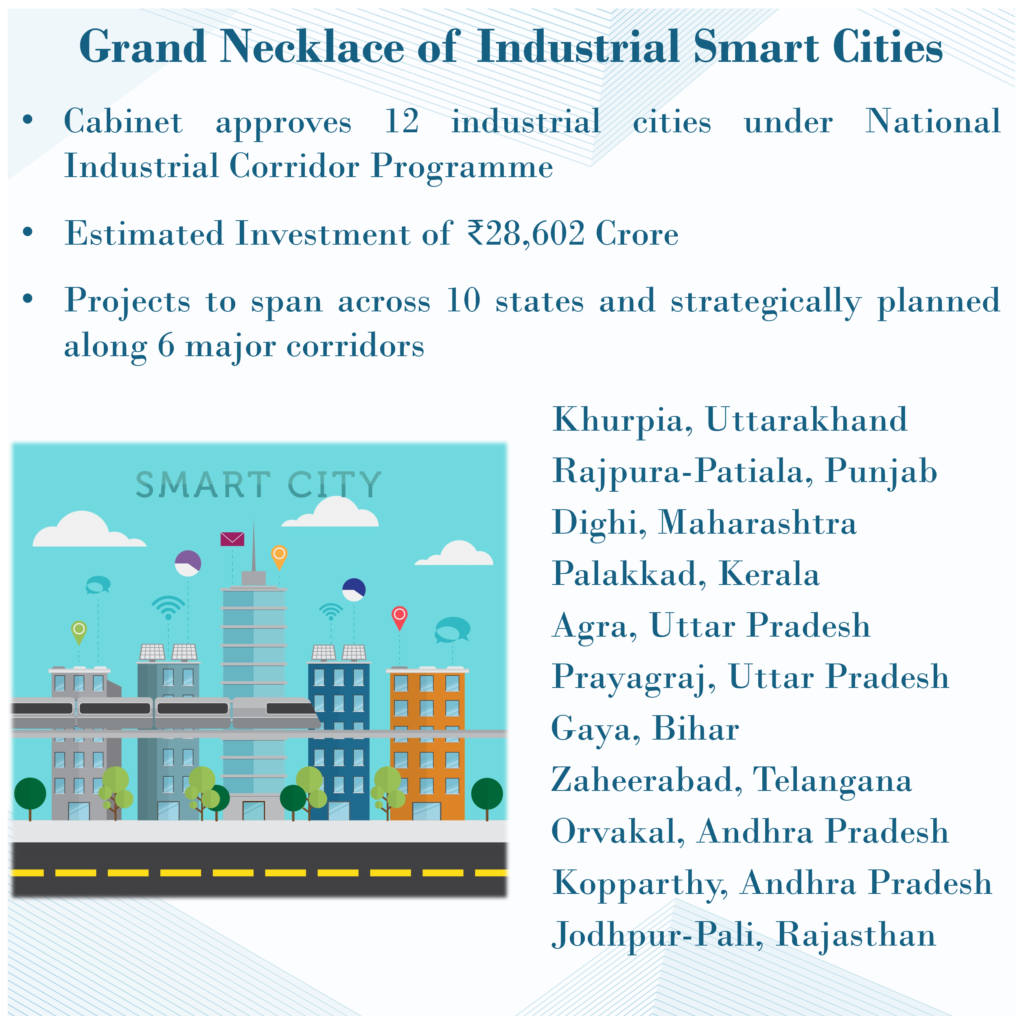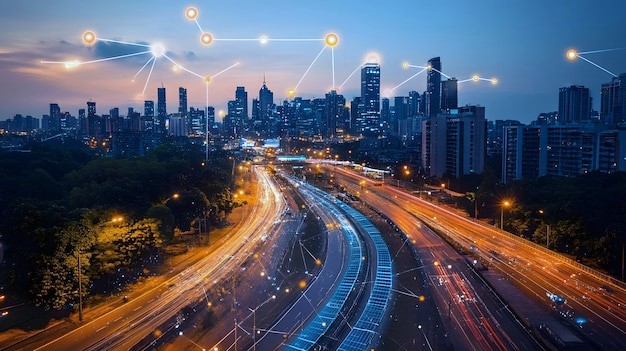Introduction
India’s National Industrial Corridor Development Programme is set to redefine the future of urban and industrial development. This ambitious initiative is not just about creating new industrial cities but also about establishing smart cities that integrate next-generation technologies across various sectors. The aim? To position India as a global leader in manufacturing and investment, making it one of the top destinations for industries worldwide.
By creating integrated industrial corridors, the government is pushing for accelerated growth in the manufacturing sector while promoting systematic urbanization. These corridors, built with strong multi-modal connectivity, are designed to foster economic growth, generate employment, and uplift regions socio-economically.
Key Takeaways
- Smart Cities: The program focuses on developing greenfield smart cities with advanced infrastructure and sustainability features.
- Economic Growth: Aims to drive $2 trillion in exports by 2030 through robust industrial ecosystems.
- Employment Generation: Expected to create 1 million direct jobs and 3 million indirect jobs.
- Sustainability: Incorporates green technologies and ICT-enabled utilities for eco-friendly industrial operations.
Background of the Programme

The foundation for this initiative was laid with the Delhi-Mumbai Industrial Corridor (DMIC). In 2008, the Delhi Mumbai Industrial Corridor Development Corporation (DMICDC) was formed to oversee the project. By 2016, the programme evolved into the National Industrial Corridor Development and Implementation Trust (NICDIT), expanding its focus to multiple industrial corridors across India.
The NICDC, National Industrial Corridor Development Corporation (formerly DMICDC) is now responsible for comprehensive project development, including preparing master plans, feasibility reports, and detailed project reports. Additionally, it acts as a key intermediary in developing and establishing infrastructure projects, facilitating the creation and distribution of financial instruments, negotiating loans, and designing schemes for resource mobilization and credit extension for infrastructure development.
Smart Cities and Modern Infrastructure
The programme will see the birth of new industrial smart cities built to global standards. These cities are being developed ahead of demand, integrating features like plug-and-play infrastructure and walk-to-work concepts. This ensures that industries can operate efficiently, with all necessary amenities available at their doorstep.
Aligned with the PM GatiShakti National Master Plan, these cities will also feature multi-modal connectivity. This guarantees the smooth movement of goods and people, transforming entire regions into vibrant economic hubs.
Strategic Investments and Economic Impact
Attracting investments from large industries and MSMEs, the programme is poised to contribute significantly to India’s vision of achieving $2 trillion in exports by 2030. These smart cities are not just about infrastructure; they represent a broader strategy for economic and employment growth.
The employment opportunities alone are staggering, with the potential to create 1 million direct jobs and 3 million indirect jobs. This economic impact will provide livelihoods and contribute to the overall socio-economic upliftment of the regions involved.
Commitment to Sustainability
One of the standout features of the programme is its focus on sustainable development. From the integration of ICT-enabled utilities to the use of green technologies, the aim is to minimize environmental impact while maximizing industrial efficiency. These smart cities are designed to be both economic powerhouses and models of environmental stewardship.
Case Studies: Developed Greenfield Industrial Smart Cities
Dholera Special Investment Region, Gujarat
The Dholera Special Investment Region (DSIR) is a greenfield industrial smart city located near Ahmedabad. With a focus on sectors like defense, aviation, and high-tech industries, Dholera is set to be a major manufacturing hub. The city is a joint venture between the Government of Gujarat and the NICDC, promoting sustainable, non-polluting industries.
Aurangabad Industrial Township, Maharashtra
The Aurangabad Industrial City (AURIC) covers 10,000 acres in Maharashtra and is part of the DMIC. With 60% of the land dedicated to industrial use and the rest to residential and commercial spaces, AURIC is a well-planned smart industrial city designed to support both industrial growth and urban living.
Integrated Industrial Township Greater Noida, Uttar Pradesh
The DMIC Integrated Industrial Township Greater Noida is a joint venture between NICDIT and the Greater Noida Industrial Development Authority. This city focuses on providing world-class infrastructure, boosting regional exports, and creating quality industrial jobs.
Integrated Industrial Township Vikram Udyogpuri, Madhya Pradesh
Located in the heart of Madhya Pradesh, Vikram Udyogpuri is a key project under the DMIC. It aims to boost regional exports, attract quality investments, and support sustainable manufacturing with state-of-the-art infrastructure.
Cabinet Approval of 12 New Industrial Nodes
Recently, the Cabinet Committee on Economic Affairs approved the development of 12 new industrial nodes under the NICDP. This massive initiative, led by Prime Minister Narendra Modi, involves an investment of ₹28,602 crore. These nodes, strategically spread across 10 states, are set to boost India’s manufacturing capabilities, create jobs, and enhance the country’s global competitiveness.
The nodes approved include regions like Khurpia (Uttarakhand), Rajpura-Patiala (Punjab), and Dighi (Maharashtra), among others. The approval of these projects marks a significant milestone in India’s industrial transformation, ensuring sustainable growth and regional upliftment.
Conclusion
The National Industrial Corridor Development Programme is a transformative initiative that holds the potential to reshape India’s industrial landscape. With the recent approval of 12 new industrial nodes, the government reaffirms its commitment to fostering economic growth, creating employment, and advancing sustainable development.
As India continues to develop these industrial corridors, they will play a crucial role in enhancing the country’s global competitiveness, driving long-term prosperity, and making the vision of a self-reliant India a reality.
Courtesy: Ministry of Commerce and Industry
